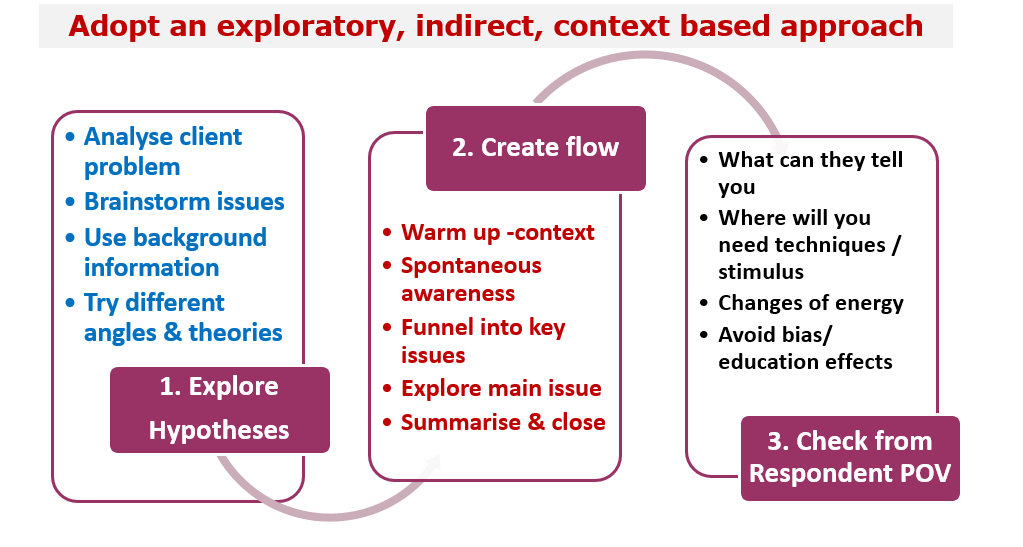A guide can start as a shopping list for insights.
It’s useful if its a forum for you, colleagues and clients to discuss, prioritise, and create hypotheses. It shows everyone what will come out of the research.
Its not useful if it becomes a skip that everyone dumps a few questions into. Take charge and ensure you have enough time to cover all the main points. Allow time for new ideas and discussins to come through.
A guide helps you with managing time, keeping people engaged, and exploring the topics.
Guides are written with relationship building and group process in mind, as well asking questions.
It helps with consistency between interviews/groups or with other researchers. However guides can evolve and change focus as the research progresses.
Ultimately a guide is to help the moderator/interviewer do their job, and it need to be in a suitable format for this.
Experienced researchers can work with bullet points and lists of probes. Newer researchers may need questions written out in full.
Over-long, detailed guides get in the way of the research by being too directive and stopping the researcher from focusing on the respondents.

Qualitative guides come to an understanding of the subject by exploring various aspects of it.
You may want to know would they open an account with a challenger bank, but you don’t ask directly. You explore their beliefs, attitudes and behaviour about banking, what new banks they have heard of, who they perceive as users of challenger banks?
What are the perceived advantages – what are the barriers to change? What features convince them, what do they feel insecure about?
- Brainstorm the topic and context
Get background information from the internet, social media, trends
Use emotional, social, cultural perspectives
Explore AROUND the subject and then prioritise what is most useful.
2. Imagine the interview or groups from the participants’ point of view
What will they be able to remember/ tell you?
At what points might they get bored?
Will you need projective techniques or stimulus material?
3. Follow a logical flow from broad exploration to a narrower focus.
Remember you are building a relationship of trust and empathy with the participant/s.
Use an easy to read layout with open questions, and lists of prompts and probes where needed. Add in techniques and stimulus.
4. Review
Include a full researcher’s introduction
Design an easy but effective warm up
Work out how long various sections might take.
Imagine what it will be like for the participant/s – would you enjoy that interview?
Download full instructions on how to write a topic guide, including two example guides.